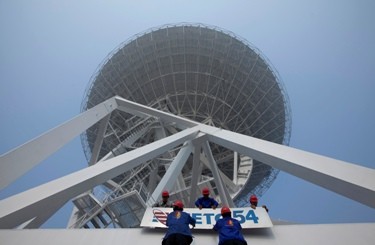The company behind Roomba, iRobot, has been in legal scuffle with the National Radio Astronomy Observatory (NRAO) over a specific electromagnetic spectrum that the company wants to use for its robot lawnmowers.
The issue started when iRobot asked authorization from the FCC to use wireless beacons for its latest automated lawnmower product. Automated lawnmowers currently available in the market uses "edge wire" which is buried within the user's lawn, the lawnmower use these wires for guidance. However, iRobot is pushing the boundaries further by using wireless beacons for its robot lawnmowers instead of the "edge wires."
According to Gizmondo, iRobot's wireless beacon will communicate with the robot lawnmower through radio waves within the 6240MHz to 6840MHz spectrum. However, this specific radio frequency is used by the National Radio Astronomy Observatory to aid them in cutting-edge space observation.
The NRAO has radio telescopes situated in few U.S. states and Chile. The same frequency is used by NRAO in detecting the presence of methanol in deep space. The NRAO argues that iRobot's proposal could disrupt its radio telescopes installed in Puerto Rico, West Virginia and New Mexico.
According to NPR, iRobot's should only be allowed to operate outside of NRAO's exclusion zone which is at least 89 kilometers from the location of the radio telescope.
In its response to the limitation issued by the NRAO, iRobot said, "As a realistic matter, iRobot's proposed operations will have an infinitesimal likelihood of impacting any radio astronomy in the band." The company added that NRAO's 89-kilometer exclusion zone is overrated and that zone should only be around 19.3 kilometers.



























